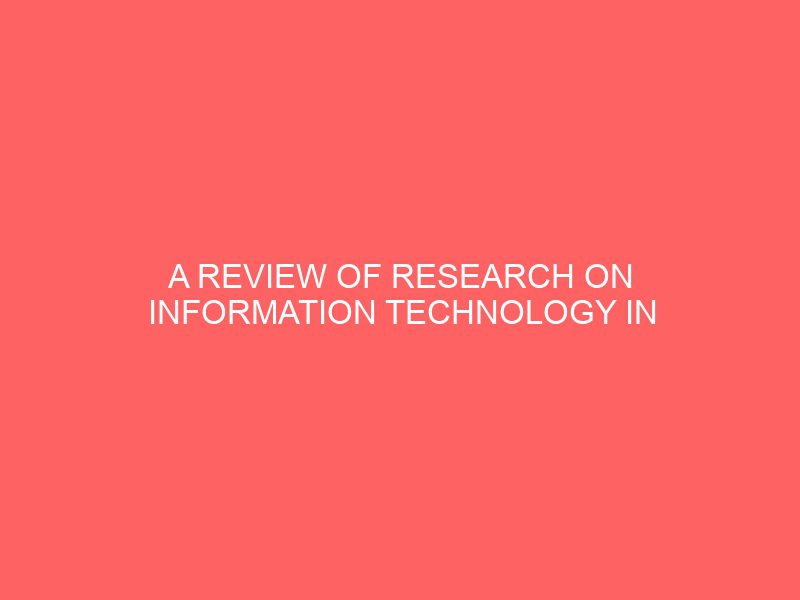Description
ABSTRACT
This paper reviews recent research on information technology in the hospitality industry. The analysis revealed three broad research areas: the Internets effects on distribution; on pricing; and on consumer interactions. Similar to aftermath of the dot com boom, the hospitality industry is realizing that information technology has unintended effects and prognosticators are often wrong. While the reviewed articles provide sound advice for hospitality operators and a rich stream of future research for academics, poor rigor and a lack of relevance throughout the reviewed journals underscore a worrying trend in hospitality research.
Introduction
Information systems form a fascinating and rapidly expanding field of study.
Hospitality traditionally lags other sectors in adopting information technology Buick, 2003 but this has changed in recent years and research into its application has followed suit. This paper represents our analysis of the information technology themes that emerged in a dozen hospitality and tourism journals: Annals of Tourism Research, Cornell Quarterly, Information Technology in Tourism, International Journal of Contemporary Hospitality Management, International Journal of Hospitality Management, Journal of Hospitality and Leisure Marketing, Journal of Travel and Tourism Marketing, Journal of Travel Research, Journal of Vacation Marketing, Tourism and Hospitality Research, Tourism Management, and Tourism Review. We reviewed their tables of contents from January 2003 to July 2004 and selected articles touching on information technology and hospitality. While by no means comprehensive, this systematic approach focused on peer reviewed publications and provides a useful overview of current information technology themes and active researchers.
INFORMATION TECHNOLOGY AND DISTRIBUTION
ELECTRONIC DISTRIBUTION
Developments in electronic distribution are the most recurrent theme throughout the period under review, reflecting topical developments since it has changed how people book hotel rooms. Two articles provide useful overviews. Carroll amp; Siguaw 2003 describe the major players involved in distribution, and highlight how economic issues are forcing hotels to provide increasing amounts of inventory to third party intermediaries. Using economies of scale and scope, the latter are gradually gaining control over both the sale of the hotel product and the selling price. In particular, Carroll and Siguaw highlight the growth of the merchant model, which changes the relationship between intermediary and supplier. Unlike commission based models, with the merchant model intermediaries determine the selling price by adding a margin to discounted rates given to them by hotels. This lack of control is problematic given the ease with which consumers can compare rates on the Web. Carroll and Siguaw maintain that the adoption of the merchant model has pressured rates downwards, thus softening hotel profitability and making hotels more dependent on intermediaries in the future. They stress using merchant channels selectively to avoid commoditisation, drafting terms and conditions carefully to effectively fence rates, and that hotels need to strive to drive business to their own websites.
OConnor and Picolli 2003 follow a similar theme in their retrospective on Emmer et als classic 1993 article Marketing Hotels Using Global Distribution Systems.
They highlight the strategic threat posed by online intermediaries, the dangers of overreliance on the merchant model, the need to develop a logical pricing strategy and the need to drive customers to direct websites to help regain ownership of the shopping experience and to gather valuable customer data. They council hoteliers to rethink their approach to distribution. Currently most use a shelf space approach being present on as many channels as possible in the mistaken belief that more is better. They fail to realise that as the number of channels increases, so too does the complexity of the infrastructure needed to support them. A good strategy involves knowing what channels to include a theme returned to by OConnor and Frew 2004 below. They also emphasize customer ownership as a key strategic issue.
Online intermediaries attract consumers based on their convenience, rich feature set and highly competitive prices. Supplier sites cannot compete on these dimensions and instead need to leverage their customer relationships to build and retain loyalty. They suggest that by using sophisticated CRM techniques, hotels can combat the online intermediaries. By developing close customer relationships, they reduce the danger of substitution, thus helping to insure long term profitability.
Dale 2004 provides an analysis explaining why electronic distribution has become so complex. Using strategic network theory, he shows how electronic intermediaries need to form strategic alliances in order to prosper. In a competitive business environment, independently developing the competences and capabilities to insure success is a massive task, so companies enter into stable inter-organisational relationships for example, strategic alliances, joint ventures and long terms supplier relationships to leverage the capabilities of partners. Dale maintains that establishing such virtual clusters leads to synergistic strategic value, with each partner reciprocally and mutually benefiting from the relationship, generating inimitable and non-substitutable network resources. This synergy helps offset the newness of the firm and helps compete with more established players.
Dale identifies five categories of relationships: Channel, which enables one company to access the distribution channels of another; Collaborative, where competitors cooperate with each other to achieve goals that would be difficult in isolation; Communicative, where content from infomediaries enriches and adds value to partner websites; Complementary, where companies cross sell products normally bought together e.g. flights and hotel rooms; and Converse, where the partners distribute unrelated products, thus allowing each one to access the distribution channels of the other in a nonthreatening manner. He highlights how this framework explains current developments in travel, where intermediaries have created a large number of networks, with each partner gaining from the competitive advantage this brings. He speculates that competition in the future will be dictated more by the network of partners as a whole than by a single intermediary, and advises firms to participate in such networks unless they want to be left at a competitive disadvantage.
Given that electronic distribution is likely to grow more complex, how can suppliers decide which of the growing range of channels to use OConnor and Frew 2004 address this issue by developing an evaluation methodology for electronic channels of distribution. Having reviewed literature on the evaluation of technology projects, they argue that existing approaches have major limitations. They thus use a Delphi study to develop and prioritize a portfolio of factors for use in channel adoption and continued use decisions. In contrast to contemporary literature, which stresses evaluating projects on strategic, financial and marketing criteria, their findings suggest that technical and operational factors should drive the evaluation process. While the decision to continue using a particular channel is more multifaceted, technological and operational issues remain at the fore, suggesting that performance should be the key determinant. The study highlights the complex nature of such evaluations, as well as how the increasingly complex environment makes the use of formal methodology important.








Reviews
There are no reviews yet.